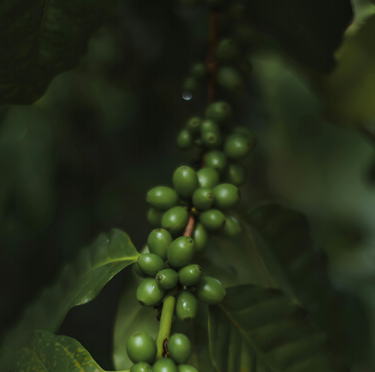You may have a favourite bean and a preferred method of brewing, but how can you keep those beans or your ground coffee as fresh as possible for as long as possible? Instant coffee (is it really coffee?!) is freeze-dried giving it a much longer shelf life and suits being kept in a jar. But coffee either roasted, as whole beans or ground is a perishable product. You may have also noticed that the taste of your coffee changes slightly over time after you have opened the sealed bag. Chocolate notes can become cherry, or vanilla can become nutty, and this can change from bean to bean and depending on how fresh the coffee is. Let’s explore some of the different ways of storing coffee beans so you can keep different types of real coffee as fresh as possible.
Use An Airtight, Opaque Container
The best way to store coffee beans is in an airtight container made of ceramic, stainless steel, or glass. The airtight seal prevents oxygen from getting in and staling the beans. An opaque container blocks light which also degrades the coffee.
Coffee is porous and soaks up any surrounding aromas or flavours. Make sure to store it away from pungent smelling spices or foods. Clean containers thoroughly to prevent transfer of any smells to your coffee.
Some excellent storage containers for maximum coffee freshness include:
-
Ceramic canisters with rubber gasket lids
-
Stainless steel containers with clamp-shut lids
-
Glass jars with air-tight screw-on lids
-
Opaque bags that can be rolled or squeezed to remove air
If using bag storage, be sure to push out excess oxygen repeatedly as you use the beans. Buy only enough to last 1-2 weeks. For large batches like 5lb+ bags bought online or wholesale, divide into smaller airtight containers upon arrival.
No matter what container you choose, the key is that it is impenetrable by air, light, moisture, and smells from the environment. This creates the perfect dark, aroma-free environment for your beans.
Eliminate Air from Storage Containers
In addition to being in an airtight opaque container, minimizing oxygen exposure helps your beans stay fresh even longer. Oxygen accelerates the staling process - chemical changes start degrading the aromatic compounds and essential oils that give coffee its flavour. The less air your storage vessel holds, the better.
For bags, squeeze out all excess air before tightly sealing or using a clamp. If using a lidded canister or jar, consider adding an oxygen absorption packet inside before clamping it shut. These absorbent packets soak up oxygen molecules, leaving mostly nitrogen which doesn't impact taste.
You can find oxygen absorber packets sold with some storage containers or online. Look for the type formulated for coffee storage - they are labelled as safe for direct food contact. Add one packet per pound of beans to your container. Replace the oxygen absorber every 2-4 weeks as the materials inside get used up.
If not using packets, simply make sure to minimize air space at the top of your container. Fill it nearly to the brim with coffee beans then seal. This limits available oxygen for the beans to interact with.
Remember - it's all about reducing air exposure! An airtight container alone isn't enough if half of it is filled with air instead of beans. Eliminate oxygen in every way possible.
Keep Beans in a Cool, Dry, Dark Place
Coffee beans prefer a calm, quiet existence when not being roasted or ground! Ideal storage conditions are 60-70°F, dark, and low humidity. Exposure to light, heat, or moisture speeds up the staling process.
Store beans in the coolest spot in your kitchen - try a bottom cabinet away from appliances, windows, and sinks. Avoid placing containers directly on counters which see more light and fluctuations in temperature.
You also want storage in a dry area without moisture and condensation. Prevent beans from picking up dampness by keeping away from sinks and uncovered foods. Monitor for appearance of moisture inside containers. If seen, dry the interior before adding beans back in to prevent mould growth.
And beans dread light most of all! Constant light exposure degrades the aromatic compounds even faster. Store in an opaque airtight container, then place that inside a dark cabinet, closed pantry, or drawer. Choose a spot with no windows or appliance indicator lights shining.
Basements and cellars make excellent storage when free of dampness and extremes in temperature. The dark, cooler environment doubles preservation time. Just be vigilant about checking moisture levels and keeping away from water pipes or external walls.
Consider Environmental Impact
When purchasing coffee beans, it’s important to consider environmental impact as well as how you will store them. Opt for reusable, sustainable storage materials over single-use plastics when possible.
Coffee beans themselves are typically packaged in coffee bags that are either plastic or composite materials that are challenging to recycle. If buying whole bean coffee in bags, look for renewable plant-based bags that are certified home compostable.
Some roasters use bags that are made of recyclable materials like kraft paper. While not air-tight, these allow you to transfer beans into your own airtight containers at home without excess waste.
To store coffee beans, choose reusable containers made of glass, stainless steel, or ceramic over plastic. Reuse them time and again for years of enjoyment without added waste. Glass and stainless steel are endlessly recyclable too. Or look for plastic canisters made from post-consumer recycled materials.
When buying coffee pods, avoid plastic capsules or pods with excessive protective wrapping that ends up in landfills. Seek out 100% compostable plant-based options that break down naturally in backyard compost bins.
Coffee farming itself has an environmental impact with water and land usage too. Opting for Fair Trade, organic certified coffees supports more sustainable agriculture practices.
It’s easy to make small changes around sustainable materials and ethical sourcing that make a big difference! Consider beans, bags, storage methods and roaster practices holistically.
Dealing with Ground Coffee
Unlike coffee beans, ground coffee begins deteriorating instantly as soon as it's ground. This is because the protective outer shell has been cracked open, exposing the inner compounds to oxygen, light, and moisture. Ground coffee can go completely stale in just a few hours up to one week after grinding.
To enjoy fresh taste, only grind enough to immediately use. Alternatively, store coffee beans' excess grounds in special airtight canisters with one-way CO2 valves that allow damaging gases to escape without letting oxygen back in. These maintain freshness for up to 3-4 weeks.
If buying pre-ground coffee beans in bulk bags for a home or commercial coffee maker, divide into single use portions in airtight containers upon first opening the bag. Write the date on each to keep first-in first-out rotation. Expect peak flavour for about 5 days up to 2 weeks.
For rapid preservation, you can also freeze excess grounds. Measure 1-2 tablespoons of grounds into small plastic freezer bags. Squeeze out all air before sealing and freezing. Later thaw by placing the bag in the refrigerator overnight or leaving at room temperature for 1-2 hours. Use thawed grounds within 12 hours. The freezing process alters cellular structure, so frozen grounds should be reserved for cold coffee drinks without precise extraction needs.
With proper storage methods and planned usage, you can still enjoy delicious coffee made from grounds. Just be vigilant about air exposure from the moment of grinding onwards. The clock is always ticking faster than with whole beans!
Extending Life of Freshly Roasted Beans
If you buy large bags of freshly roasted coffee online or have excess inventory from a café, it’s hard to use beans fast enough before they stale. Luckily there are methods to safely prolong shelf life!
Best practice is to break bulk bags down into smaller airtight containers with oxygen absorbers immediately after receiving. This limits oxygen to only what’s inside each container. Store coffee beans properly out of light in cool conditions, these smaller batches will stay fresh for up to 4 weeks.
For longer preservation up to 9-12 months, you can carefully freeze excess roasted coffee beans. Measure beans in airtight freezer bags or containers allowing some room for expansion during freezing. Before thawing, let beans come to room temperature gradually over 2-3 hours to avoid condensation. You’ll notice some degradation in flavour complexity, but frozen beans still make an enjoyable brew.
With planned small-batch storage and strategic freezing, you can enjoy large purchases of freshly roasted coffee over an extended period. Just be diligent about airtight containers, temperature regulation, and gradual thawing. Follow best practices and your beans will wait patiently for their turn!
When to Toss Stale Beans
So how can you tell when coffee beans are too old and stale? Rely first on your senses! Visually inspect beans for any darkening or oil spots indicating staling. Sniff coffee beans and grounds - you’ll notice an increasingly dull, faded aroma when freshness declines.
Brew a test cup, being very aware of aromas releasing during brewing plus first tastes. Stale compounds present as flat, cardboard-like tastes lacking depth and nuance the beans once had. Some common sensory descriptors for stale coffee are woody, papery, bitter, and acidic.
Use the suggested timelines in this article as a reference point, but your nose and tastebuds give the best indicators when coffee isn’t worth drinking anymore. Whole beans stored properly should maintain complexity for 4 weeks up to several months before going downhill.
Keep notes on when beans were purchased and opened. First-in first-out usage also prevents a neglected bag from being rediscovered months past expiry.
While composting beans pained me in the past - now I do it gladly knowing it reduces waste! Never feel bad about discarding expired beans. Pour them into your outdoor compost along with coffee grounds to allow their nutrients to contribute to your garden. Then freshly restock your supply.
Comprehend the Science Behind Storing Ground Coffee
To truly understand optimal coffee storage, it helps to comprehend what physically happens to compounds in the beans post-roasting. Once the protective outer shell is cracked open by grinding or oxygen, complex molecular changes kick-off.
Bean cell structure breaks down over time, causing key aromatic compounds like caffeol, trigonelline, and organic acids to evaporate or degrade via oxidation. Essential oils known to give flavour also diminish. The sugars and amino acids start to caramelise. What’s left is a duller, flatter brew lacking freshness.
Heat, light, and moisture accelerate the staling reactions. Cooler temperature slows molecules down, giving you more time to use beans while complexity persists. An airtight container provides a stable environment preventing external influence on compounds. It’s all chemistry!
So while we simply say “coffee goes stale”, the science behind that is fascinating. Knowledge contributes to better handling practices that minimize degradation effects. By controlling time, temperature, moisture, air, and light exposure backed by chemistry, we maximize shelf life.
Suggested Containers for Travel
Coffee lovers who travel should bring their favourite home brew on the road! Portable storage ideas include:
Specialty travel canisters designed for coffee with interior gasket seals and exterior silicone sleeve.
Reusable stainless steel drink containers with screw-on lids make great multipurpose small-batch bean carriers. Use the drinking container you already have!
Consider bean to cup all-in-one devices allowing you to grind whole coffee beans and directly brew into a contained mug. Simple and effective.
For backpacking or camping, pack bean portions into multiple resealable lightweight bags to minimize air. Store coffee beans correctly inside additional waterproof sacks in case bags get punctured.
Foil coffee bag resealers allow rolling and clamping standard 12 oz retail bags. Eliminate oxygen before packing them flat among your luggage.
Coffee beans are a natural product
We don’t want to teach your grandmother how to suck eggs, but we need to start here. And like the proverbial egg, coffee has a shelf life. The shelf life for freshly roasted coffee beans, or ground coffee, as soon as you have opened the sealed bag, is about a month. And like other fresh products, your enemies will be heat, light, oxygen and moisture. But, the biggest enemy you will face will be oxygen — as soon as you open your bag, air will creep in and start attacking the aroma of your ground or whole beans.
Next up, heat. Heat speeds up the chemical reactions that will cause your coffee to perish far more quickly. Light also affects how quickly your coffee will perish. Why? Light breaks down the delicate flavour compounds in your ground or whole beans. Lastly, moisture is not your friend — mouldy coffee anyone? Avoid allowing moisture to get at your beans as you could be in for a taste sensation, and it won’t be a pleasant one.
Coffee Storage Solutions
Bag Fresh
Conveniently for you, you won’t be surprised to learn that we have thought about how you can keep your coffee fresh for as long as possible. Here at Rave, we send out our coffee, beans or ground, in bags that are easy to re-seal. This will prevent carbon dioxide from escaping and that nasty oxygen getting in there. Just keep the bag somewhere cool and dry to stretch out the shelf life of your beans. One question we get asked is should I keep my coffee in the fridge? The answer is clearly ‘no’.
A Coffee Container
A great solution for keeping your coffee fresh in an airtight container. A stainless steel container with a mechanism for sealing the container tight will ensure ultimate freshness. Much like our sealable bags, a container will keep the carbon dioxide in and the oxygen out. Just be conscious that you should always store the jar somewhere cool and dry. If you kept the jar on a shelf over the hob, moisture could still affect your ground or whole beans.

To freeze or not to freeze?
Can you freeze coffee beans? Well yes, but there are some really important things to consider.
- Make sure your beans are well sealed. Remember one of our deadly coffee enemies is moisture? If your container (or bag) is open to the frozen elements of your freezer drawer your coffee will become moist — very moist.
- If you are bulk buying beans and want to keep them fresh, separate into 250g bags. This way you can take them out as and when you need them.
- Remember coffee is a perishable product, so would you eat some veg straight from the freezer? Of course you wouldn’t, so make sure you defrost your beans and bring them up to room temperature first.






